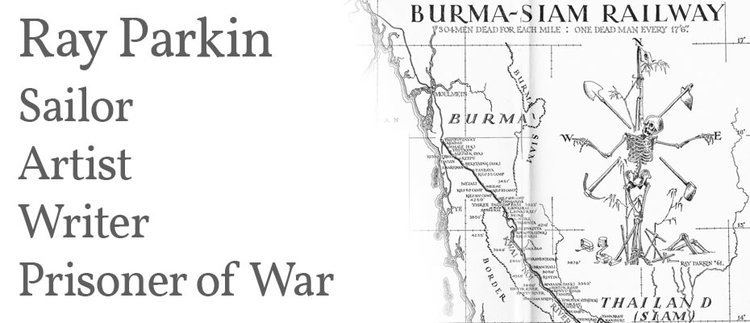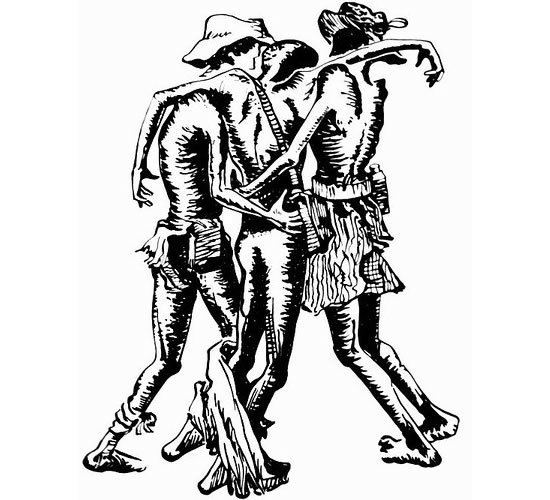Name Ray Parkin | Role Writer | |
 | ||
Books Into the smother, Out of the smoke | ||
Ray Parkin—The Australian Prisoners' Accounts
Ray Parkin (6 November 1910 – 19 June 2005) was an Australian writer, amateur artist, and self-taught historian, noted for his memoirs of World War II and a major work on James Cook's Endeavour voyage.
Contents
- Ray ParkinThe Australian Prisoners Accounts
- Early life
- World War II
- Post war experience
- H M Bark Endeavour
- References

Early life
Parkin was born in the Melbourne suburb of Collingwood. As a boy he was always interested in ships and was in the sea scouts. He was always keen on drawing (especially drawing ships), and after leaving school at age 14 that interest got him a job at an engraving firm. In 1928 aged 18 he joined the Royal Australian Navy, which took him to ports around the Pacific and gave him plenty more subjects to draw.
He rose through the ranks of the navy to become a chief petty officer, and in 1939 was drafted onto the newly commissioned light cruiser HMAS Perth. Its sole peaceful mission was a trip to New York to represent Australia at the World's Fair, from which it was straight into World War II.
World War II

Parkin's first attempt at writing was during his war service. He started a romantic novel, which was lost when Perth was sunk by Japanese action in the Sunda Straits in the early hours of 1 March 1942. He spent about 11 hours in the water, and reckoned it was during that time he realised the romantic novel had a fatal flaw – life is not romantic.

Parkin was among ten men who washed up on a small island. They found a steel lifeboat and rigged a sail to try to get back to Australia. For 16 days they slipped past enemy shipping and tropical storms before reaching Japanese occupied Tjilatjap where they were captured.

In June 1942, Parkin was imprisoned in Bandoeng camp. He met Laurens van der Post there and they immediately became friends. Several prisoners there liked to draw, including Dutch artist Keis von Willigen, and they would scrounge up paper from wherever they could. Van der Post managed to get Parkin a set of watercolour paints from a Chinese contact. Portraits of fellow inmates were a favourite.
In November 1942, Parkin was among the "Dunlop 1,000" under elected commander and surgeon Lieutenant Colonel "Weary" Dunlop who were sent to the building of the infamous Burma-Thailand Railway. In that misery, Parkin focused on the beauty that could be found: plants, butterflies, nature generally. Others, like English-born artist Jack Chalker, recorded the horrors of the camps.
In March 1944, Parkin was to be shipped to Japan. He couldn't keep his collection of drawings and diary notes concealed on that trip, so Dunlop offered to look after them for him. Dunlop had a false bottom in his operating table, where he could hide things like Chalker's medical drawings and Parkin's papers.
Parkin ended up working an underground near the Japanese village of Ohama and remained there until the Japanese surrender in August 1945. Although his war experiences were harrowing, they didn't leave him with hatred of the Japanese, as he believed hate caused war.
Post war experience
Back in Melbourne with his wife and children he worked as a tally clerk on the wharves. Weary Dunlop had kept his drawings, and Parkin made them into a little volume dedicated to Dunlop. Some of the sketches were printed in Dunlop's published diaries about the camps.
A lot of ex-POWs wrote books about their experiences. Parkin wrote his memoirs in novel form; the character of John (or Jack) is Parkin in all but name. Laurens van der Post recommended them to the Hogarth Press in London, and the result was Out of the Smoke in 1960, Into the Smother in 1963, and The Sword and the Blossom in 1968. The works were praised for the simple poetry in the writing.
H. M. Bark Endeavour
In 1967, Parkin started researching James Cook's voyage to Australia aboard HM Bark Endeavour. He was first inspired by an inaccurate picture of the ship when searching for a representation on which to base a Christmas card. Over the years he discovered and dispelled several misconceptions built up about Cook, his crew, and the ship, including rehabilitating the reputation of Sydney Parkinson's drawings of the ship.
Parkinson was a draftsman on the voyage and his sketches are the only surviving contemporaneous drawings of the ship, but the received wisdom among historians was that Parkinson had taken artistic license, since the drawings seemed inexact and differed from Admiralty plans. Parkin's detailed knowledge of the ship and seafaring showed that what had been thought just squiggles were actual equipment on the ship, and where the sketches and the plans differed it was almost certainly from variations during building (it being fairly common at the time for shipwrights to have some freedom).
Parkin's neighbour, history professor Max Crawford, encouraged Parkin to publish. The research took 13 years, and it then took a further 17 years to find a publisher. In the end John Clarke (best known as a satirist) showed it to publisher Mark Kelly, who in turn recommended it to the speciality academic imprint The Miegunyah Press at the Melbourne University Press.
The result was H. M. Bark Endeavour published in two volumes in 1997. It won the Douglas Stewart Prize for non-fiction and the NSW Book of the Year in the New South Wales Premier's Literary Awards for 1999. Parkin thought himself a little out of place at the awards ceremony, as he put it, "It was funny, though, this doddering old bloke who used to work on the wharves–what did I have in common with the intellectual literary crowd?"
In 2003, Parkin's three wartime memoirs were republished in paperback by Melbourne University Publishing.
A biography of Parkin, Ray Parkin's Odyssey, was written by Pattie Wright in 2012.
